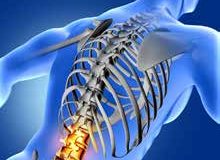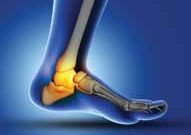By Donna Motley, Director of Claims
During my many years of handling Workers’ Compensation claims, I’ve dealt with all kinds of injured workers. Two claimants stand out in my mind as being the nicest people, and they sustained the most severe and tragic injuries.
One case occurred in 1997. A 24 year old father of two (who had a pretty idyllic childhood) went on an early morning run to assist a company semi that had broken down on the side of the highway. The truck was 5-6 feet off the road, on the shoulder, with orange cones and triangles up and flashers on. The driver of a pick-up truck presumably fell asleep at the wheel and hit our insured while he was under the hood of the company truck, tossing him several feet into the highway. The injured worker had to roll himself out of the path of oncoming traffic to avoid being run over. The end result – the injured worker’s left leg was amputated and his right foot was crushed. The amputation was originally below the knee, but due to complications, ultimately ended up amputated at the thigh. At 24 years old, this gentleman was very active, was even a volunteer fire fighter. Yes, he sought the advice of an attorney (although he did not sue), yes he collected money from the automobile carrier of the vehicle that hit him, and yes, Workers’ Compensation insurance has paid (and continues to pay) all of his medical bills. He has a prosthetic leg and has had multiple surgeries on the right foot due to continuing pain – to the point he has asked on more than one occasion that we amputate the right foot.
 BUT, this has not stopped him from living an active, productive life. As a matter of fact, we have had to repair and replace his prosthetic leg more than the average, because he is so active. He snowmobiles, he put a new roof on his house, he wears shorts and he was still a volunteer fire fighter and has worked his way up to Fire Chief for a nearby Township.
BUT, this has not stopped him from living an active, productive life. As a matter of fact, we have had to repair and replace his prosthetic leg more than the average, because he is so active. He snowmobiles, he put a new roof on his house, he wears shorts and he was still a volunteer fire fighter and has worked his way up to Fire Chief for a nearby Township.
The second case occurred in 2003. A 45 year old machine operator (who had already overcome multiple obstacles in his life) sustained an amputation of his left thumb, left index finger and left middle finger. Doctors were not able to reattach. We explored the possibility have having surgery for a toe/thumb transfer; we looked at surgery to extend the bones at the amputated sites thereby giving him some function. The injured worker declined additional surgery. He was provided prosthetics, for cosmetic reasons, not for function. Again, this was a very active gentleman, he played sports, did home repairs as side jobs. Friends and family told him to sue (he did not), obtain permanent disability status (he did not), not return to work (he did and he returned to the same machine). An investigation was made to see if there was a third party claim – there wasn’t. Workers’ Compensation paid all his medical bills.
AGAIN, this injury did not stop this gentleman from doing what he wants to do. He has resumed all his activities, a therapist even helped devise something for bow hunting. The injured worker advised the only thing he had trouble doing was buttoning the cuff on his opposing hand – and for that he utilized a button hook.
So why were these two gentlemen able to adjust? I attended a seminar quite a while ago where they talked about pain and how people manage same. This particular doctor advised, our perception of pain starts when we are toddlers. When a toddler falls, how does the parent react? Does the parent run and coddle the child showing how upset “they” are as well – instilling in the child that a terrible thing just occurred? Or does the parent assure the child they are safe and OK, use affection and humor or distraction to settle the child. Sometimes, to a child, all it takes is a Snoopy Band-Aid to make things better, but if the parent acts like a traumatic event just occurred, that is what the child will remember. These are things we carry into our adult life.







